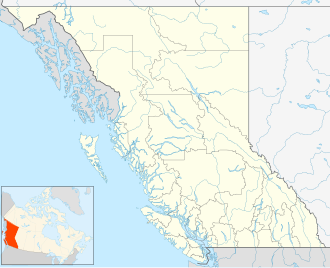| Blackcomb Glacier Provincial Park | |
|---|---|
 | |
 | |
| Location | New Westminster Land District, British Columbia, Canada |
| Nearest city | Whistler, BC |
| Coordinates | 50°05′29″N122°52′15″W / 50.09139°N 122.87083°W |
| Area | 221 ha. (2.2 km2) |
| Established | August 2, 1990 |
| Governing body | BC Parks |
Blackcomb Glacier Provincial Park is a provincial park in British Columbia, Canada, located just east of and above the resort town of Whistler and adjacent to Garibaldi Provincial Park. The park was established in 1990 on land formerly protected by Garibaldi Park.
